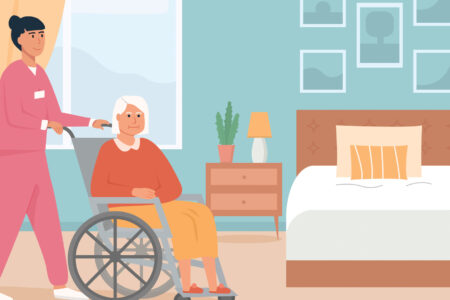
When Canada’s Supreme Court made its unanimous ruling on assisted dying in 2015, it could be argued that it enabled one of the greatest steps toward “patient-centredness” in our health care system. Allowing people to choose the time and place of their imminent death and to die with dignity and in physical and emotional comfort should be everyone’s right. This is what my mother wanted, as did more than 7,000 other Canadians who were clear about how they wanted their suffering to end.
There is, however, a serious flaw in the assisted dying legislation. The Supreme Court justices were silent on the key matter of when consent must be given. Perhaps predictably, legislators and bureaucrats left with the task of filling in these details shifted the focus away from the patient and instead seemed to take a risk and liability approach. If the person wishing to have medically assisted death can’t confirm their consent in the moment before they are scheduled to die, it’s called off.
Let’s be clear here. Anyone wanting a medically assisted death has to complete a very thorough process. You need a dire diagnosis. You need two assessments by doctors who participate in the Medical Assistance in Dying program to confirm the diagnosis, its probable trajectory and your capacity to make decisions. These steps alone take some time, and I can attest from personal experience that there are many opportunities to think, talk, think and talk some more as the process unfolds. At each touch point with the program, the patient is reminded that they can change their mind at any time.
The requirement to get two witnesses to attest to the authenticity of the patient’s signature on the request form is a bit more challenging. These people must not be family members, anyone who stands to benefit financially from the estate or a health professional in the circle of care. In the throes of end-of-life planning, finding those people you know well enough to validate your death wish is harder than one might imagine. But we did.
So, when all is said and done, the person has discussed this with their doctor, has made a written request to proceed, has been deemed by two independent clinicians to be competent and a candidate for the procedure, and has signed a consent witnessed by two independent parties. Still, if in the seconds before the line to the final IV is opened, the person can’t say yes one last time, the doctor assisting is obliged to stop.
In an otherwise wonderful experience for my mother and our family with MAiD, it was the last step that caused the greatest amount of anxiety. Her worst fear was that, with a rapidly progressing disease, she might lose capacity to give that final (and in her opinion, entirely superfluous) consent. The standing joke in the days leading up to her planned death was that she would count backwards from 10, just to reassure herself (and the rest of us) that she was still “okay.” The usual 10-day waiting period between the second assessment and when the medically assisted death can occur was actually waived, just in case she wouldn’t be.
In the experience of one physician in the MAiD program I spoke to, about a third of patients are not able to provide this last consent because they have had a stroke or deteriorated so much in the standard waiting period that they have lost competency. Ironically, this was likely the very scenario the patients were aiming to avoid by using the MAiD directive. Due to a technicality, their choice is robbed from them. I personally know of others who have chosen to accelerate their death to avoid losing competency. That is a dreadful decision to have to make.
A simple change to the legislation, to respect advance requests for assisted dying, would solve this problem. As far as my mother was concerned, her signed consent was her advance request. She understood that it could be withdrawn at any time (right to the very end). What she wanted was for it to be honoured right to the very end. Simple enough.
As devastating as her diagnosis was, my mother felt empowered by the ability to take charge of her death. Partly, it was her way of stealing it from cancer. Mostly, she wanted it to happen on her own terms. She wanted it to be dignified and at the time of her choosing. That was the plan. Dying on her own terms was her choice. Leaving us really wasn’t.
Moreover, as a society (and health care system), we need to overcome the stigma of talking about death and dying. Opting for a medically assisted death is not a failure of treatment or of palliative care. For my mom, those aspects of health care were exceptional. So too was her death. It was gentle, compassionate and consistent with what she wanted to happen to her.
My mom’s final utterance to me and my sister was that she loved us. She told my dad, her husband of 56 years, that she adored him. But her very last words were to the doctor who administered the drug that would end her life.
She said, “Thank you.”
Photo: Shutterstock by Casual-T
Do you have something to say about the article you just read? Be part of the Policy Options discussion, and send in your own submission. Here is a link on how to do it. | Souhaitez-vous réagir à cet article ? Joignez-vous aux débats d’Options politiques et soumettez-nous votre texte en suivant ces directives.






